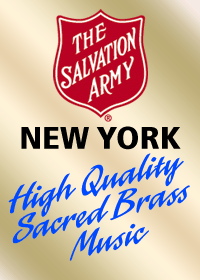Aerial view from ‘the box’

Brass Band World collaborates with the Association of Brass Band Adjudicators (AoBBA) in providing an adjudicator’s perspective on this year’s Regional test-piece selections for sections 1-4
SECTION 1
Essay by Edward Gregson
AoBBA adjudicator - Paul Holland
It is expected that conductors will be as musically creative as possible within the bounds of the score and enable the adjudicator(s) to ‘hear what we see’!
I. Dialogue: To begin, good balance and intonation between the cornet and euphonium line, coupled with the dynamic expression detailed on the page should be achieved. After Figure 1, the music should feel in 3/4 time, and care should be taken with balance: f vs ff before Figure 2 and the internal balance of cornet octaves.
From Figure 2 through Figure 4, the musical line should be long, flowing and lyrical. Figure 5 requires...
For more tips from Paul Holland subscribe to BBW Digital here, or visit the website of The Association of Brass Band Adjudicators
SECTION 2
The Mermaid of Zenor by Philip Harper
AoBBA adjudicator - David Hirst
Programmatic in style, with brief notes about each movement in the foreword to the score, all performances of this work should attempt to capture its descriptive character and mood.
The various percussion effects are there to enhance the performance, and can be important in producing an imaginative and musical whole.
I. The Sea and Seafaring: Conductors should attempt to be as accurate as possible with tempo, but more importantly allow the music to flow from phrase to phrase without hesitation, keeping the ‘Grandioso con moto’ descriptor at the forefront of the approach. Dynamic contrast plays an important role in the dramatic quality of this opening and conductors should work hard to achieve this. Solo lines should be played with...
For more tips from David Hirst subscribe to BBW Digital here, or visit the website of The Association of Brass Band Adjudicators
SECTION 3
A Cambrian Suite by Michael Ball
AoBBA adjudicator - Roger Webster
Having been involved in the premier performance and subsequent recording of this beautiful little piece, I feel able to comment with some authority on the musical, technical and logistical challenges it offers.
I. Gwyr Harlech: This movement should immediately show a steadfast intent and pride, within a controlled tempo and dynamic framework, as we build upon the initial Men of Harlech theme. Balance is vital, paying attention to all dynamics and accents. The composer has given every bit of advice required to effectively communicate his thematic ideas, so use them.
Ensure that the ‘a tempo’ markings following each poco rit, actually returns to the correct and consistent tempo, and don’t anticipate the rits. Due to the original military nature of the first movement theme, it is essential to...
For more tips from Roger Webster subscribe to BBW Digital here, or visit the website of The Association of Brass Band Adjudicators
SECTION 4
The Journal of Phileas Fogg by Peter Graham
AoBBA adjudicator - Anne Crookston
Drawing on elements of Jules Verne’s epic work Around the World in Eighty Days for its inspiration, Peter Graham has skilfully created ten vignettes, depicting a series of adventures providing the outline for this piece.
I - Oct. 1 1872 - London: With its bright, spirited tempo (♩= 132), the opening section depicts the starting point of the journey in London. Dynamically, the opening is shaped in straightforward fashion: the overall shape is that of a gradual diminuendo - each rehearsal letter is quieter than the previous one. A muted cornet fanfare, answered by trombones and lower brass, signals a change in style just before letter ‘D’. Make sure there’s no drop in tempo here!
II - Oct 2 - En-route: This short section links the bells of London to the sights and sounds of the Folies Bergère in Paris. Two solo cornets will need...
For more tips from Anne Crookston subscribe to BBW Digital here, or visit the website of The Association of Brass Band Adjudicators
Exclusive BBW online feature - David Roberts, the highly successful conductor of the Rothwell Temperance Band and AoBBA adjudicator for Section 4 Midland region reveals his thoughts on Peter Graham's work:
"The Journal of Phileas Fogg was commissioned for the National Children’s Brass Band of Great Britain and was first performed in July 2012. Composer Peter Graham uses elements from the epic Jules Verne novel “Around the World In Eighty Days” to create a series of adventures recorded in an imaginary diary by the hero of the story Phileas Fogg.
The opening section (London) is the start point of the journey with the London bells sounding. Conductors will be aware of possible intonation issues here as the movement links with fanfares to letter E entitled En Route. This short section is a boat train ride to Paris complete with the almost obligatory wood block featured in so many Peter Graham's works.
We are straight to the Moulin Rouge for the Can Can which of course gets faster and faster. The challenge here will be for solo cornets and euphonium to be together at letter I at this fast tempo. We are then transported to Moscow. Audiences will not need a score to know which country we are in as the composer captures the Cossack style from the first two bar as a chase ensues firstly on horns and then joined by solo cornets and euphoniums. Once again the tempo, and in this case, volume increases until a pause takes us to a complete change of mood as we have a Viennese waltz with opportunities for bands to show a bit of style after the faster sections that have gone before.
The first solo comes at letter W where we have a short cornet cadenza in real Spanish trumpet style leading to Seville - At the bullfight. Plenty of drama can be expressed here with good use of the dynamics. This takes us to letter DD and for me the highlight of this piece in Lady Stewart's Air (sea voyage) another classic Peter Graham melody that I am sure players will enjoy rehearsing and audiences will enjoy listening to.
This links us to The Final Journey written as a short march that leads us to the Homecoming. This Maestoso section gives bands a real chance to show off a good balanced band sound. Those that don’t tire here should impress before the Allargando brings us to the trademark percussion roll before the glorious major chord finale.
This piece should find favour with bands and audiences. It is very much a band piece with barely any solos, but enough variety in styles for the men in the middle to work on. Those who take you on the journey will take the trophies come results time."
PHOTO: David Hirst - Conductor, and Secretary of The Association of Brass Band Adjudicators





.gif)







